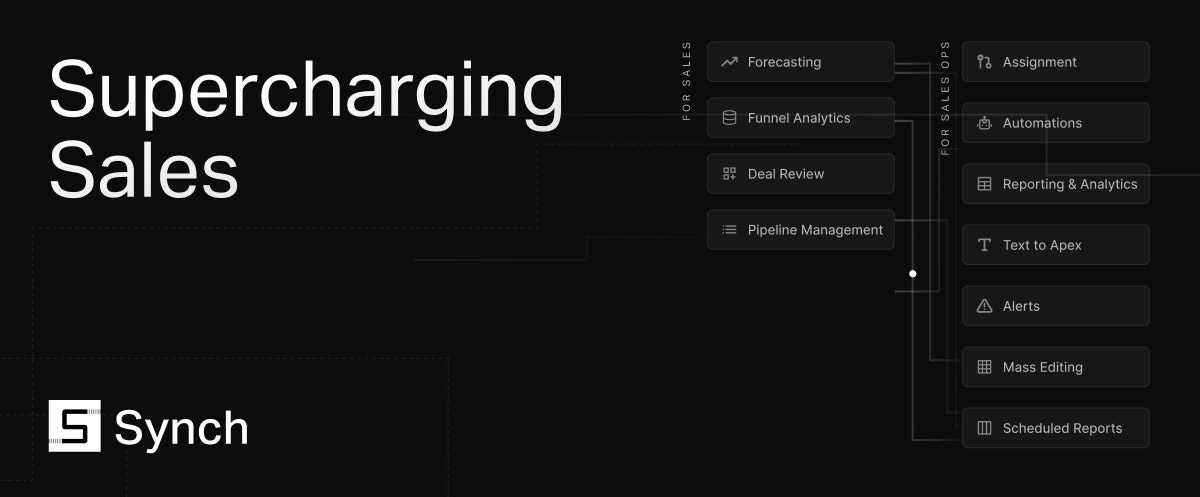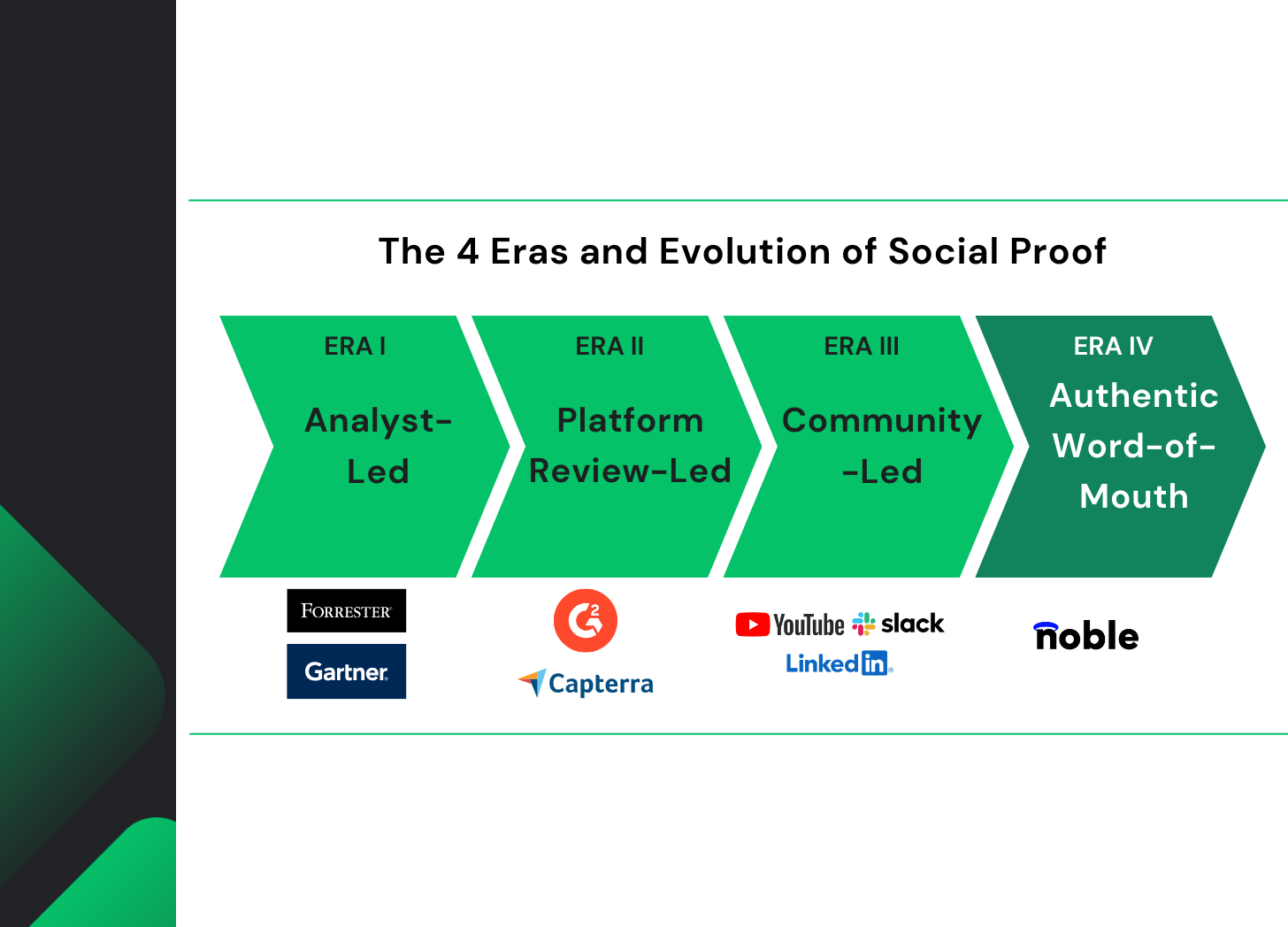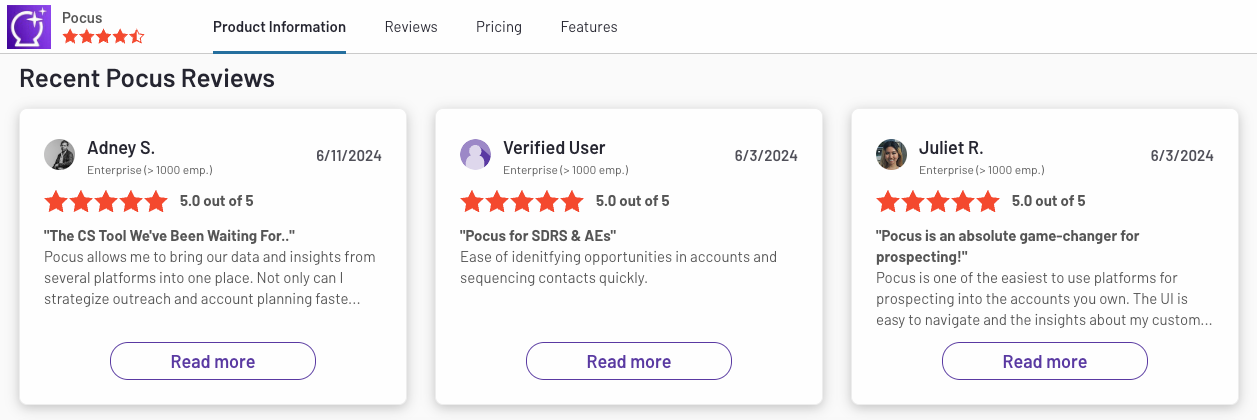The 4 Eras and Evolution of Social Proof
We've entered a fourth era for B2B SaaS social proof that emphasizes even greater authenticity
Hello and welcome to The GTM Newsletter - read by over 50,000 revenue professionals weekly to scale their companies and careers. GTMnow is the media brand of GTMfund - sharing advice on go-to-market from working with hundreds of portfolio companies and the insight of over 350 of the best in the game executive operators behind the fund. They have been there, done that at the world’s fastest growing SaaS companies.
This week’s newsletter is brought to you by Synch — the only unified sales stack.
If you’re spending too much time managing your sales process and not enough time meeting your sales quota, Synch is here to help. Synch unifies your company’s revenue tooling so you can spend more time selling.
Synch offers forecasting, deal review, pipeline management, alerts, lead assignment, and other features connected via a shared analytics suite.
All of these features work out of the box with your Salesforce environment. No consultants. No add-ons or point solutions needed. Just Salesforce SSO & Go.
Covered today:
How social proof has evolved through 4 eras.
More on GTM for your eardrums.
More on GTM for your eyeballs.
Startups to watch.
Hottest GTM jobs of the week.
GTM industry events.
The 4 Eras and Evolution of Social Proof
Software vendors by volume have exploded.
Choosing the right software has never been more important - or more challenging.
With countless options available, people need trustworthy guidance. The journey of social proof in B2B SaaS reflects this need, evolving over its eras to reshape how trust and credibility are established.
There have been three eras, and we are now entering a new fourth era.
Let’s get into it.
Era I: Analyst-led
Forrester, Gartner, etc.
Before the rise of review sites like G2 and Capterra and the advent of social influencers and peer-to-peer recommendations, analysts were the primary source of advice for software purchases.
Analysts, such as those from Forrester and Gartner, were industry veterans with deep connections and extensive knowledge about software solutions. They conducted thorough research, met with vendors, and attended industry events to stay informed about various software categories.
However, as these analyst firms grew, they shifted towards a pay-to-play model, where only vendors who subscribed to their services could access analyst time and insights. This shift led to a decline in the quality of analyst data and a proliferation of software categories, which diluted the value of their recommendations. Companies began to see through this model and started exploring alternative sources for software advice.
Era II: Platform Review-led
G2, Capterra, etc.
In 2012, G2 disrupted the market by introducing a new model: crowd-sourced reviews and ratings of business software, similar to Yelp for restaurants. G2 built a community of tech professionals who provided high-quality content and reviews, often incentivized with contests, iPads, and gift cards. This user-generated data became a valuable resource for investors and software buyers.
The rise of crowd reviews coincided with the growth of platforms like Amazon and Yelp, where consumers could hear from peers rather than relying on a single analyst. This model gained traction, and other review sites like Capterra, Software Advice, and GetApp emerged. Many of these sites were eventually acquired by large analyst firms, which paradoxically boosted G2's prominence.
Era III: Community-led
Communities, influencers, customer advocacy programs, etc
The advent of professional networking sites like LinkedIn and online communities powered by Slack and other platforms enabled individuals to connect with peers and learn about software from trusted sources.
(actual screenshot from our GTMfund Slack)
Influencers with large followings on LinkedIn, YouTube, and Twitter began sharing software recommendations. Initially, these recommendations were genuine and trustworthy, but over time, some influencers started monetizing their posts, leading to a decline in credibility.
Vendors also recognized the power of customer advocacy programs, leveraging satisfied customers to influence prospects. However, when companies overused these programs and began compensating advocates, the authenticity of these endorsements diminished.
Era IV: Authentic Word of Mouth
Peer-to-peer
Amidst these evolving dynamics, the most powerful way for prospects to gain trust in a vendor’s product remains true: organic word-of-mouth.
Organic is the aspect unique to this era, as curated posts gain skepticism.
The true test is whether a customer is blindly reached out to. What would they say? No warning, no curation - simply true, authentic feedback on their experience with a product.
This has been happening behind closed doors with peers asking others for feedback on products in groups, as demonstrated by the previous screenshot.
This method is great but lacks the precision of contacting the appropriate people and posting in the hopes that someone is a customer.
There are solutions appearing to help facilitate the ease of authentic peer-to-peer connection, such as Noble.
Noble facilitates genuine connections between vendors' prospects and existing customers through a third-party platform, enabling organic, honest conversations.
This shifts the dynamic entirely.
Vendors confident in their product-market fit will embrace this approach despite the slight risk of negative feedback, as transparency fosters greater trust. Unlike G2 reviews or paid influencer posts, this kind of model ensures that prospects hear directly from customers they know and trust in a personal way, providing a more authentic and reliable recommendation.
👂 More for your eardrums:
The GTM Podcast - subscribe on Apple, Spotify, YouTube or wherever you listen.
In this milestone 100th episode, Scott is joined by Sophie Buonassisi, VP of Marketing at GTMfund and GTMnow and a key architect behind the media brand’s growth. Sophie leads media, marketing and community across the fund and the media company.
Additional quick listens:
👀 More for your eyeballs
ChatGPT: Everything you need to know about the AI-powered chatbot. ChatGPT, OpenAI’s text-generating AI chatbot, has taken the world by storm since its launch in November 2022. What started as a tool to hyper-charge productivity through writing essays and code with short text prompts has evolved into a behemoth used by more than 92% of Fortune 500 companies.
🚀 Startup to watch
Gaiia - raised a $13M Series A to revolutionize customer experience for Internet Service Providers (ISPs).
Crossbeam and Reveal merged into a single entity, joining forces to allow everyone to partner with everyone.
Sapient - announced the launch of Sapient Codeless, the world’s first codeless unit testing platform.
🔥 Hottest GTM jobs of the week
Director, Channel Management (NAMER) at Vanta (Remote - US)
Product Marketing Lead at Patch (San Francisco)
Account Executive - Public Sector (SLED) at Armada (Remote - US)
Business Development Representative at Cube (New York)
Customer Implementation Manager at Gorgias (Buenos Aires)
See more top GTM jobs on the GTMfund Job Board.
🗓️ GTM industry events
Upcoming go-to-market events you won’t want to miss:
ELG Conference: July 9 (London, UK)
GTM EMEA: July 10 - 11 (London, UK)
Catalyst 2024: August 14 -16 (Chicago, IL)
SaaStr Annual: September 9 - 12 (Bay Area, CA)
INBOUND: September 18 - 20 (Boston, MA)
GTM Summit: October 14 - 16 (Austin, TX)
This newsletter was researched, written and edited by myself and the GTMfund team from analyzing hundreds of SaaS companies and the landscape of social proof. If you share it on social, make sure to tag GTMnow so we can see your takeaways and help amplify them.
Barker ✌️











